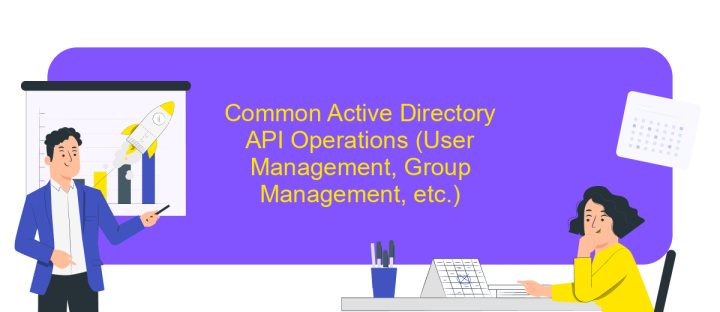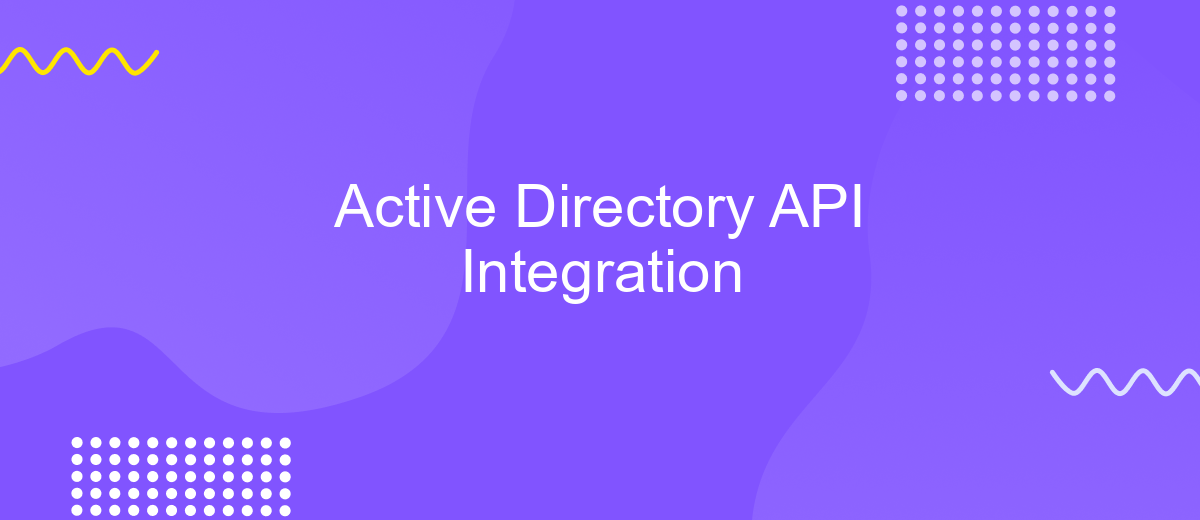Active Directory API Integration
In today's digital landscape, seamless integration of directory services is crucial for efficient identity and access management. Active Directory API Integration offers a powerful solution for businesses looking to streamline user authentication, enhance security, and improve operational efficiency. By leveraging Active Directory's robust API capabilities, organizations can automate processes, reduce administrative overhead, and ensure consistent policy enforcement across diverse applications and systems, ultimately driving innovation and productivity.
Introduction to Active Directory and its API
Active Directory (AD) is a directory service developed by Microsoft for Windows domain networks. It is an essential component for managing network resources such as users, computers, and services. AD provides a structured data store as the basis for a logical, hierarchical organization of directory information. This allows administrators to efficiently manage permissions and access to network resources, ensuring security and compliance within an organization.
- User Management: AD allows for centralized management of user accounts and credentials, simplifying the process of authentication and authorization.
- Resource Management: Administrators can control access to files, printers, and other network resources through group policies and permissions.
- Scalability: AD is designed to scale from small to large organizations, supporting millions of objects in a single domain.
- Integration: AD can be integrated with various applications and services, enhancing its functionality and providing seamless interoperability.
The Active Directory API provides programmatic access to AD features, enabling developers to create custom applications and automate administrative tasks. By leveraging this API, organizations can enhance their IT infrastructure, streamline operations, and improve overall efficiency. Understanding AD and its API is crucial for IT professionals who aim to optimize their network environments.
Authentication and Authorization with Active Directory

Integrating Active Directory (AD) for authentication and authorization provides a robust solution for managing user access in enterprise environments. AD streamlines the process of verifying user credentials by leveraging a centralized directory service, ensuring that only authorized personnel gain access to critical resources. This integration enhances security by employing protocols like LDAP and Kerberos, which facilitate secure communication between clients and servers. By utilizing AD, organizations can implement single sign-on (SSO), reducing the need for multiple passwords and enhancing user experience.
For seamless integration, services like ApiX-Drive can be instrumental. ApiX-Drive offers a user-friendly interface to connect various applications with Active Directory, automating workflows and reducing manual intervention. By using such services, businesses can efficiently synchronize user data across platforms, ensuring consistent and up-to-date access controls. This not only simplifies management but also provides scalability as organizational needs evolve. With ApiX-Drive, integrating AD becomes a streamlined process, allowing IT teams to focus on more strategic initiatives while maintaining robust security protocols.
Common Active Directory API Operations (User Management, Group Management, etc.)

Active Directory (AD) API integration facilitates seamless management of directory services, streamlining tasks such as user and group management. By leveraging AD APIs, organizations can automate administrative operations, enhancing efficiency and reducing manual errors.
- User Management: APIs allow for creating, updating, and deleting user accounts. They also enable password resets and retrieval of user attributes.
- Group Management: With APIs, you can create, modify, and delete groups. Managing group memberships and retrieving group attributes become straightforward tasks.
- Authentication and Authorization: APIs support user authentication, ensuring secure access to resources. They also facilitate role-based access control by managing permissions.
- Directory Search: APIs enable searching for users, groups, and other directory objects, providing flexibility in querying directory data.
Integrating Active Directory APIs into your systems enhances operational capabilities, allowing for robust management of directory services. This integration supports automation, improving both security and productivity across the organization.
Practical Examples and Code Snippets (e.g., C#, Python, PowerShell)

Integrating with the Active Directory API can significantly enhance your application's capabilities by allowing seamless user authentication and management. To get started, understanding the basic operations such as querying user information and managing groups is crucial. Here, we'll explore practical examples using different programming languages.
In C#, the System.DirectoryServices namespace provides a straightforward way to interact with Active Directory. For instance, you can use DirectorySearcher to find users by their username. Similarly, Python's ldap3 library simplifies LDAP operations, making it easy to connect and query the directory. In PowerShell, the Get-ADUser cmdlet is a powerful tool for retrieving user details.
- C#:
using System.DirectoryServices; // Initialize DirectorySearcher - Python:
from ldap3 import Server, Connection; # Connect and search - PowerShell:
Get-ADUser -Filter * # Retrieve all users
These examples illustrate how different languages can be utilized to interact with Active Directory, each offering unique features and flexibility. By leveraging these tools, developers can efficiently manage directory resources, ensuring robust application integration and enhanced user experience.
Best Practices and Security Considerations
When integrating with Active Directory (AD) via API, it's crucial to follow best practices to ensure a seamless and secure connection. First, always use secure authentication methods such as OAuth 2.0 or Kerberos to protect sensitive credentials. Implementing role-based access controls will help manage permissions effectively, ensuring that users have only the necessary access. Regularly audit and monitor API usage to detect any unauthorized activities or anomalies. Additionally, consider using a service like ApiX-Drive to automate and streamline integrations, reducing the risk of human error and enhancing operational efficiency.
Security considerations should be a top priority when dealing with AD API integrations. Encrypt all data in transit and at rest to safeguard against potential breaches. Keep your API endpoints updated and patched to protect against vulnerabilities. Implement multi-factor authentication (MFA) for an added layer of security. Conduct regular security assessments and penetration testing to identify and mitigate risks proactively. By adhering to these best practices and security measures, organizations can ensure a robust and secure integration with Active Directory.
FAQ
What is Active Directory API Integration?
How can I authenticate with the Active Directory API?
What are the common use cases for Active Directory API Integration?
How can I simplify the integration process with Active Directory?
What are the security considerations when integrating with Active Directory API?
Apix-Drive is a simple and efficient system connector that will help you automate routine tasks and optimize business processes. You can save time and money, direct these resources to more important purposes. Test ApiX-Drive and make sure that this tool will relieve your employees and after 5 minutes of settings your business will start working faster.

